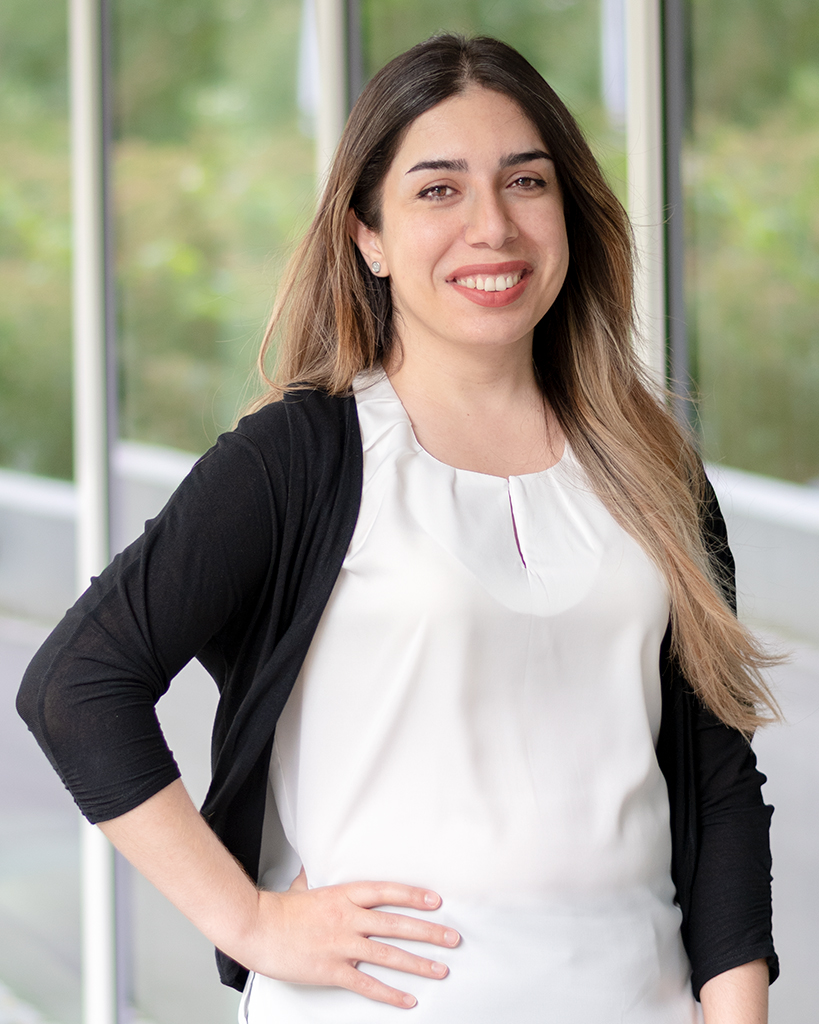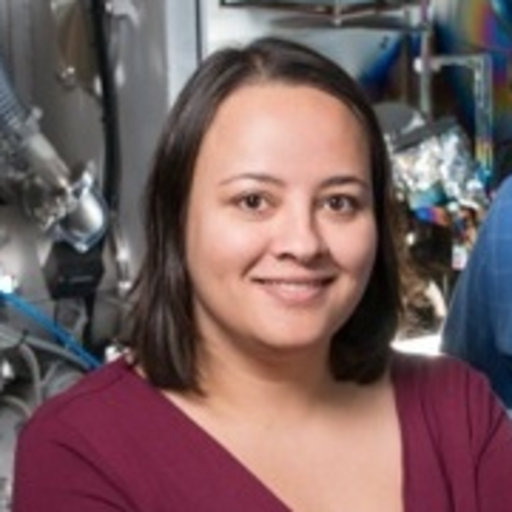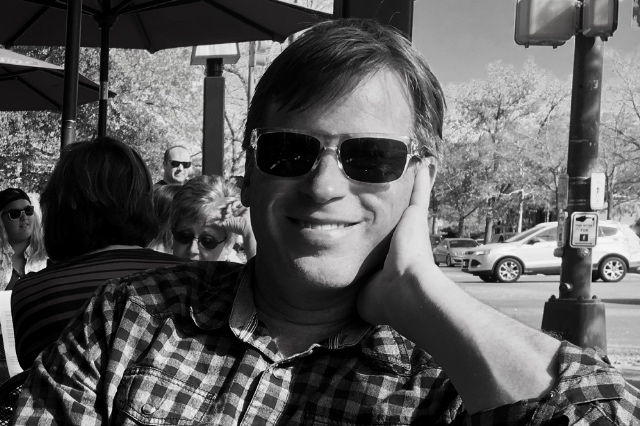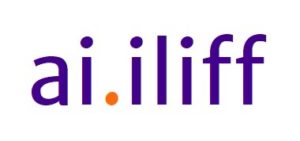A project of the Data Science Across the College initiative, directed by Timothy Beal and Mark Turner and supported by President (now Emerita) Barbara Snyder, to build on strengths and potentials across many fields, including the arts and humanities, social and behavioral sciences, and natural and mathematical sciences, to elevate data science and machine learning as a college-wide focus for research, scholarship, and curriculum development.The Fall 2020 and Spring 2021 colloquium series is run in conjunction with h.lab and takes place mostly but not always on occasional Wednesdays, 3-4pm Eastern Time. |
Previous colloquia
Tuesday, 8 June 2021, 11:30 EDT, 17:30 CESTSpeaker: Mahnaz Parian-Scherb, University of Basel and University of Mons. This joint Cognitive Science & Data Science Colloquium doubles as the public dissertation presentation for the final conferral of a PhD in Computer Science, summa cum lauded, awarded via a cotutelle from the University of Basel and the University of Mons. |

|
||
|
Abstract:
Analyzing and understanding gestures plays a key role in our comprehension of communication. Investigating the co-occurrence of gestures and speech is currently a labor-intensive task in linguistics. Although, with advances in natural language processing methods, there have been various contributions in this field, computer vision tools and methods are not prominently used to aid the researchers in analyzing hand and body gestures. In this talk, we present different contributions tailored to tackle the challenges in real-world gesture retrieval, which is an under-explored field in computer vision. The methods aim to systematically answer the questions of “when” a gesture was performed and “who” performed it in a video. Along the way, we develop different components to address various challenges in these videos, such as the presence of multiple persons in the scene, heavily occluded hand gestures, and abrupt gesture cuts due to the change of camera angle. In contrast to the majority of the existing methods developed for gesture recognition, our proposed methods do not rely on the depth modality or sensor signals, which are available in some datasets to aid the identification of gestures. Our vision-based methods are built upon the best practices in learning the representations of complicated actions using Deep Neural Networks. We have conducted a comprehensive analysis to choose the architectures and configurations to extract discriminative spatio-temporal features. These features enable the retrieval pipeline to find “similar” hand gestures. We have additionally explored the notion of similarity in the context of hand gestures through field studies and experiments. Finally, we conduct exhaustive experiments on different benchmarks and, to the best of the author’s knowledge, run the largest gesture retrieval evaluations ever using real-world news footage from the Newscape dataset, which is a collection of more than 400,000 videos, containing many scenes that are challenging for any retrieval retrieval method. The results, assessed by experts from linguistics, suggest the high potential of our proposed method for inter-disciplinary research and studies. |
|||
Wednesday 3-4pm Eastern. 28 April 2021Speaker: Cristóbal Pagán Cánovas, Ramón y Cajal Assistant Research Professor, Department of English Philology, University of Murcia; Alexander von Humboldt Fellow, Quantitative Linguistics, University of Tübingen. |
|||
|
Abstract:
How should we model the daunting complexity of human communication? When we communicate, do we merely add up multimodal information and verbal form-meaning pairings, facilitating gestalt recognition, or, instead, do we reuse flexible multimodal patterns that we have interiorized through usage-based statistical inference? This talk, on co-speech gesture and semantic distinctions, explores the second possibility, which proposes a holistic view of the communicative signal as a multimodal flow of low-level features (articulatory, gestural, acoustic, etc.) that anchor meaning directly on action, with no need of intermediate, discrete units in the mind. I take advantage of the unprecedented opportunities offered by the Red Hen Lab’s NewsScape Library, which allows us to analyze multiple utterances of the same phrase or n-gram with manual and computational processing tools, of statistical techniques such as generalized linear models and generalized additive mixed models, as well as of theoretical frameworks such as conceptual integration, enactive cognition, and discriminative learning for implicit grammar. Worried about all the technicalities? Don’t be: I will walk you through the details and showcase what can be done with a minimal data science background such as mine. |
|||
Wednesday 3-4pm Eastern. 24 March 2021Speaker: J. Elliott Casal, Research Scholar, Department of Cognitive Science, Case Western Reserve University |
 |
||
|
Abstract:
Research on discipline specific written genre-practices and related genre-based writing pedagogies have increasingly integrated corpus-based approaches to linguistic form with rhetorical approaches to writers’ functional aims. Such research draws on developments in genre theory, usage-based approaches to language learning, and at times Sociocultural Theory to analyze and teach linguistic resources in terms of their functional affordances for situated communicative practices, often with an emphasis on discipline specific academic genre practices. This talk outlines the emerging body of corpus-based genre analysis research and related pedagogical intervention studies targeting novice disciplinary writers. In doing so, I use my doctoral dissertation (Casal, 2020) as an illustrative example of both corpus-based genre analysis research and corpus- and genre-based writing pedagogy. Emphasis is placed on the genre analysis, in which a set of formal linguistic features (reporting verbs, shell nouns, formulaic phrase-frames, and select measures of syntactically complex structures) were analyzed using a series of manual processes, custom python scripts, and automated NLP/corpus tools across the rhetorical stages (operationalized as rhetorical moves) of 400 published research article introductions from two social science disciplines and two engineering disciplines. The talk will also briefly outline a related corpus- and concept-based pedagogical intervention which was carried out in a doctoral academic writing course. |
|||
Wednesday 3-4pm Eastern. 17 March 2021Speaker: Tiago Torrent, Federal University of Juiz de Fora – FrameNet Brasil, with Frederico Belcavello and Marcelo Viridiano |
 |
||
|
Abstract: Multimodal data analysis is at the core of several research initiatives in (Computational) Linguistics and related fields. Since the second half of the 20th century, scholars have been proposing theoretical and methodological approaches to tackle the problem of meaning construction in a multimodal setting. Such approaches have contributed to the understanding how modalities interact, how comprehenders experience them and how their interaction is organized in terms of grammar. In this talk, I present FrameNet as a fine-grained semantic representation that can be used for annotating multimodal corpora. I start by showing the changes in database structure implemented in FrameNet Brasil for enhancing its representational capacity. Then, I demonstrate how multimodal data can be annotated within this framework using de FN-Br WebTool. Finally, I present two ongoing applications of the framework to the analysis of video comprehension and to multimodal machine translation. |
|||
Wednesday 3-4pm Eastern. 24 February 2021Speakers: Wenyue Xi and Mark Turner |
  |
||
|
Abstract: FrameNet is a project used to tag text, speech, and images for conceptual frames. Turner will give a brief introduction to FrameNet and its use in both manual and automatic tagging. He will then introduce the phenomenon of Frame Blending in language and other forms of multimodal communication. Turner was the mentor for Wenyue Xi’s project during Red Hen Lab’s Google Summer of Code 2020, in which she developed a pipeline for “AI Recognizers of Frame Blends, Especially in Conversations About the Future.” Xi will give an overview of her work, in which she developed multiple algorithms that nominate various types of Frame Blends and built a preliminary system of the Frame Embedding method. Xi’s work also provides an interactive prototype of the human-in-the-loop Frame Blends Nomination System (using Red Hen’s Rapid Annotator for manual annotation). Xi provides video tutorials and a design document. Both the process and result are documented on the Red Hen Lab Techne Public Site, making this project available as a public source for the Red Hen Lab community. Xi’s system provides a starting point for developers or users who may participate in the future. |
|||
Wednesday 3-4pm Eastern. 10 February 2021Speaker: Peter Uhrig Abstract: Red Hen’s Rapid Annotator provides a platform to users to annotate large chunks of data in a short span of time and with the least possible effort. Text, speech, paintings, sculpture, video, music—any kind of digitized data—can be presented to annotators for quick annotation, creating metadata that can then be searched and analyzed with typical data science methods. This introduction is entry-level and will take participants through the steps for loading, annotating, and analyzing data. |
 |
||
Wednesday 3-4pm Eastern. 9 December 2020Speakers: Abstract: The Departments of Art History and Art, Physics, Materials Science and Engineering, the Cleveland Museum of Art and the Cleveland Institute of Art have been collaborating to investigate the application of machine learning (ML) to artist attribution based on confocal optical profilometry data from student-produced painting via the brushstroke texture. A convolutional neural network was applied to classify the surface topography among several students’ paintings. By specifying the painted subject and materials for the students, we were able to carry out a controlled study of various ML approaches including the efficacy of transfer learning as well as scaling, normalization and other pre-training analyses. We were able to confidently attribute paintings among multiple hands, with potentially significant implications for the art historical field of connoisseurship. To this end, we are now collaborating with the internationally-renown Factum Arte, in a project to apply ML on surface topography in order to test the ability of our techniques to distinguish among the hands of El Greco, his son Jorge, and members of his workshop. Additional avenues of collaboration include applying optical methods for producing non-destructive cross-sections of art works and other art conservation techniques. |
    |
||
Wednesday 3-4pm Eastern. 18 November 2020Speaker: |
h.lab |
||
|
Abstract: Deep learning has revolutionized how machines analyze, interpret, and generate language. Machines have indeed become important and accessible collaborators in the construction of meaning from language. Scholars and students in the humanities now have easy access to hundreds of cutting-edge deep learning models that can aid them in their work. Join us this week to acquaint yourself with some highly accessible programming tools that require very little coding, and consider with us how these tools might further and even transform our understanding and interpretation of human language. Click here for the Colab notebook mentioned in the talk. |
|
||
Wednesday 3-4pm Eastern. 4 November 2020Speaker: Timothy Beal, Florence Harkness Professor of Religion, with Michael Hemenway, AI Institute, Iliff School of Theology |
h.lab |
||
|
Abstract: In this session you will learn how to build a text bot in the coding language of Python. We will first make one that autogenerates its own verses based on the King James Version Bible. You can then take it home and experiment with other textual corpuses (see, e.g., twitter.com/emilymarkovson which uses the program to write and tweet four-line poems based on the complete works of Emily Dickinson). As fun as it is to play with, this program also provokes questions and issues about writing, probability, and what we might call “artificial creativity.” Click here for the Google Colab Notebook mentioned in this talk. |
|||
Wednesday 3-4pm Eastern. 28 October 2020Speaker: Micah Saxton, Tufts University, & Michael Hemenway, AI Institute at Iliff School of Theology |
h.lab |
||
|
Abstract: This workshop is an introduction to coding in Python for humanities research. We will start by showcasing a few kinds of Python projects and brainstorming about how principles or insights from these projects could be implemented in your own research. Following that, you will learn a few fundamentals to make you comfortable getting started with Python. Finally, we will provide resources you can use to learn Python on your own. Click here for the Google Colab Notebook mentioned in this talk. |
|||
Thursday, 16 April 2020, 4-5 pmSpeaker: Erkki Somersalo Abstract: |
 |
||
Thursday, 9 April 2020, 4-5 pmSpeakers: Members of the AI Institute at Iliff School of Theology Abstract: ai.iliff is a Henry Luce Foundation funded AI institute housed within the Iliff School of Theology in Denver, CO. ai.iliff developed out of several years of experience learning with machines as partners in the process of scholarship and research in the humanities. Building upon the recent advances in pre-trained language models for NLP tasks, we are using our TRUST model for ai design to build conversational ai applications to enhance student learning in online education. |
 |
Thursday, 19 March 2020, 4-5 pmSpeaker: Peter Whitehouse Peter J. Whitehouse MD-PhD has a primary appointment as Professor of Neurology, with secondary positions as Professor of Psychiatry, Cognitive Science, Neuroscience, and Organizational Behavior, and former appointments (but current interests) in Psychology, Bioethics, History, and Nursing at Case Western Reserve University. He is also currently Professor of Medicine at the University of Toronto, Honorary Research Fellow (zoology and aging) University of Oxford, and Founding President of Intergenerational Schools International. He is a card-carrying transdisciplinarian of the French variety. Major focuses of his current work have been age-associated cognitive challenges (formerly Alzheimer’s disease) and the nature of evidence and evidence of nature. Abstract: “Alzheimer’s” is for many a dominant individual and social concern. How do we gather and analyze evidence wisely to understand the phenomenology of aging associated cognitive challenges and help people and communities suffering from the condition? Examined transdisciplinarily what is the nature of evidence? Almost hypothesis-less Big Data is said to be the answer to “curing” Alzheimer’s. But as always, framing the questions and examining the words in them are the best places to start finding helpful answers. How does Alzheimer’s-type dementia relate to aging? Is it one condition? Is preserving brain health more about molecules and genes or communities and politics? What is the evidence for evidence and whose version anyway? What is the story of Big Data in the biopolitics of dementia? How do we create not AI but new symbionic/symbiotic intelligences? What is the bigger story, even grander narrative, we need to tell about the brain and aging in the emergent Anthropocene? Deconstructing the narrative of Alzheimer’s can be part of understanding our collective great derangement in failing to address the collapse of ecosystems and hence also potentially modern civilization? More importantly, how to do we use data, narrative, and metaphor together to create not only knowledge but wisdom to reinvent ourselves and our societies to be more resilient and sustainable? |
 |
Thursday, 5 March 2020, 4-5 pm
|
 |
Thursday, 27 February 2020, 4-5 pm
|
 |
Thursday, 20 February 2020, 4-5 pm
|
 |
|
Thursday, 6 February 2020, 4-5 pm
|
 |
Thursday, 30 January 2020, 4-5 pm
|
 |
Thursday, 23 January 2020, 4-5 pm
|
 |
Thursday, 16 January 2020, 4-5 pm
|
  |
To Be Scheduled
To Be ScheduledSpeaker: Kelly McMann is Professor of Political Science and Director of the International Studies Program at Case Western Reserve University. Abstract: Where a country’s political regime falls along the authoritarian-democratic spectrum has a significant impact on its citizens’ lives and its interactions with those outside its borders. Yet, research about political regimes has faced severe data limitations. To try to uncover and understand broad trends and relationships, scholars have had to rely on datasets with limited global and temporal coverage, few indicators, and questionable validity. In response to these limitations a group of scholars, including the speaker, created Varieties of Democracy (V-Dem). V-Dem is a dataset of more than 450 indicators of political regimes in all countries of the world from 1789 to the present using a transparent, rigorous methodology. The V-Dem dataset has been available for free on the internet since 2016 and is updated annually. The dataset is being used by the World Bank, the United Nations General Assembly, the U.S. Agency for International Development, among other organizations, and scholars around the world. The dataset has been downloaded more than 100,000 times in more than 150 countries since its first release. The speaker, a project manager for V-Dem, will describe the obstacles to developing big data in the social sciences, the challenges and solutions to creating the V-Dem dataset, and the utility of the dataset outside of the social sciences. |
 |
To Be ScheduledSpeaker: Shannon French is the Inamori Professor in Ethics, Director of the Inamori International Center for Ethics and Excellence, and a tenured member of the Philosophy Department with a secondary appointment in the law school at Case Western Reserve University. Abstract: |
 |

